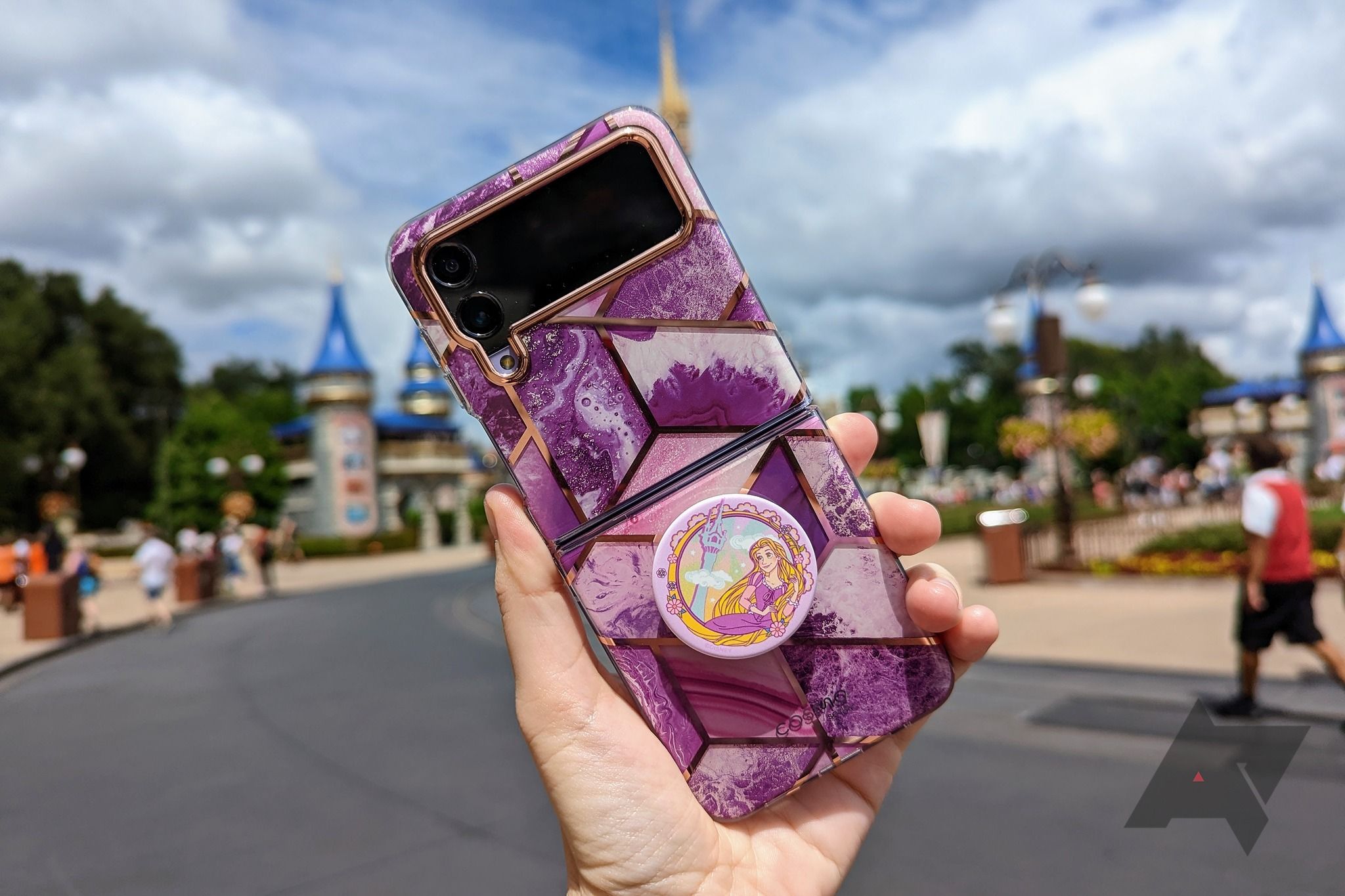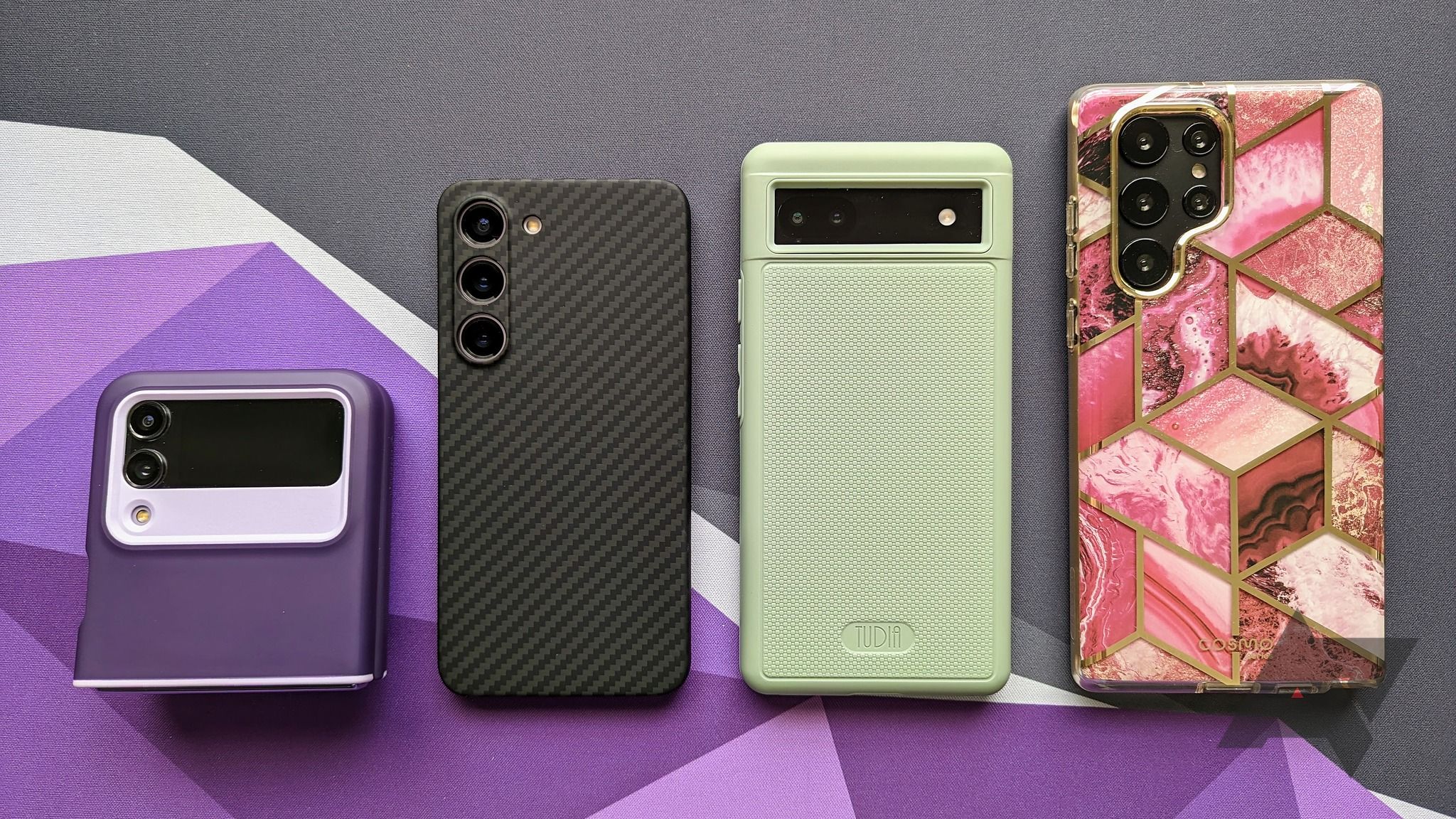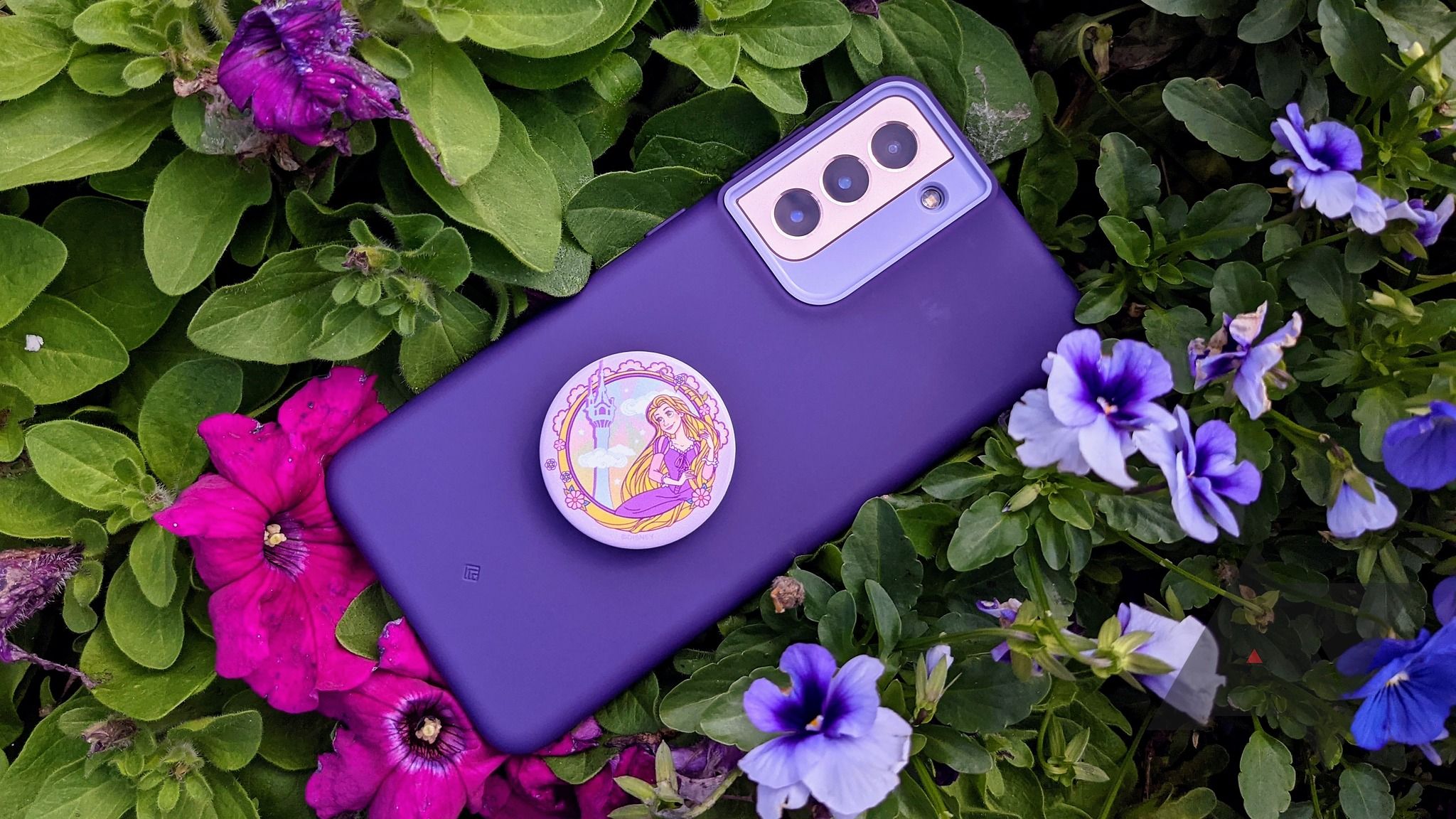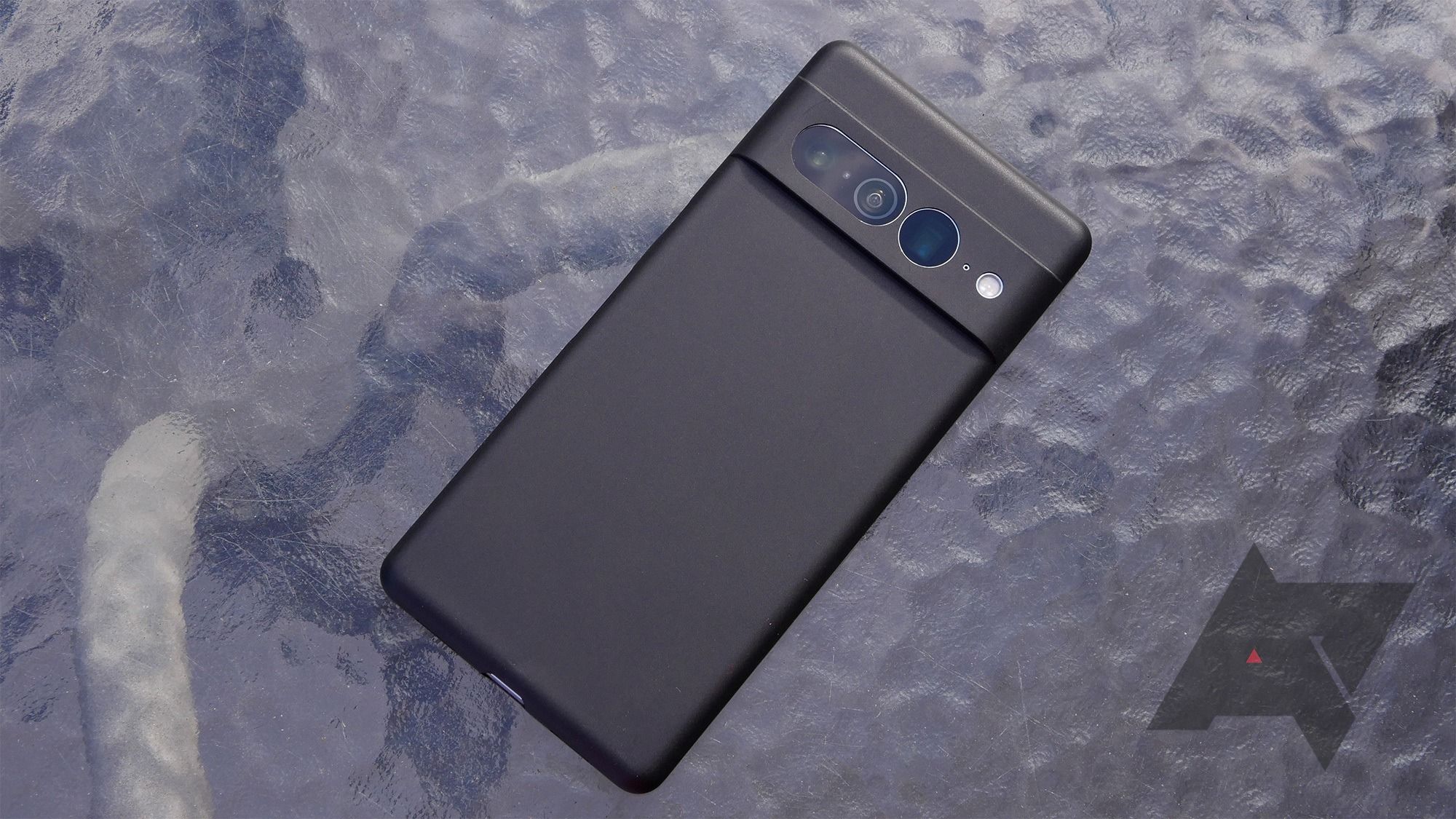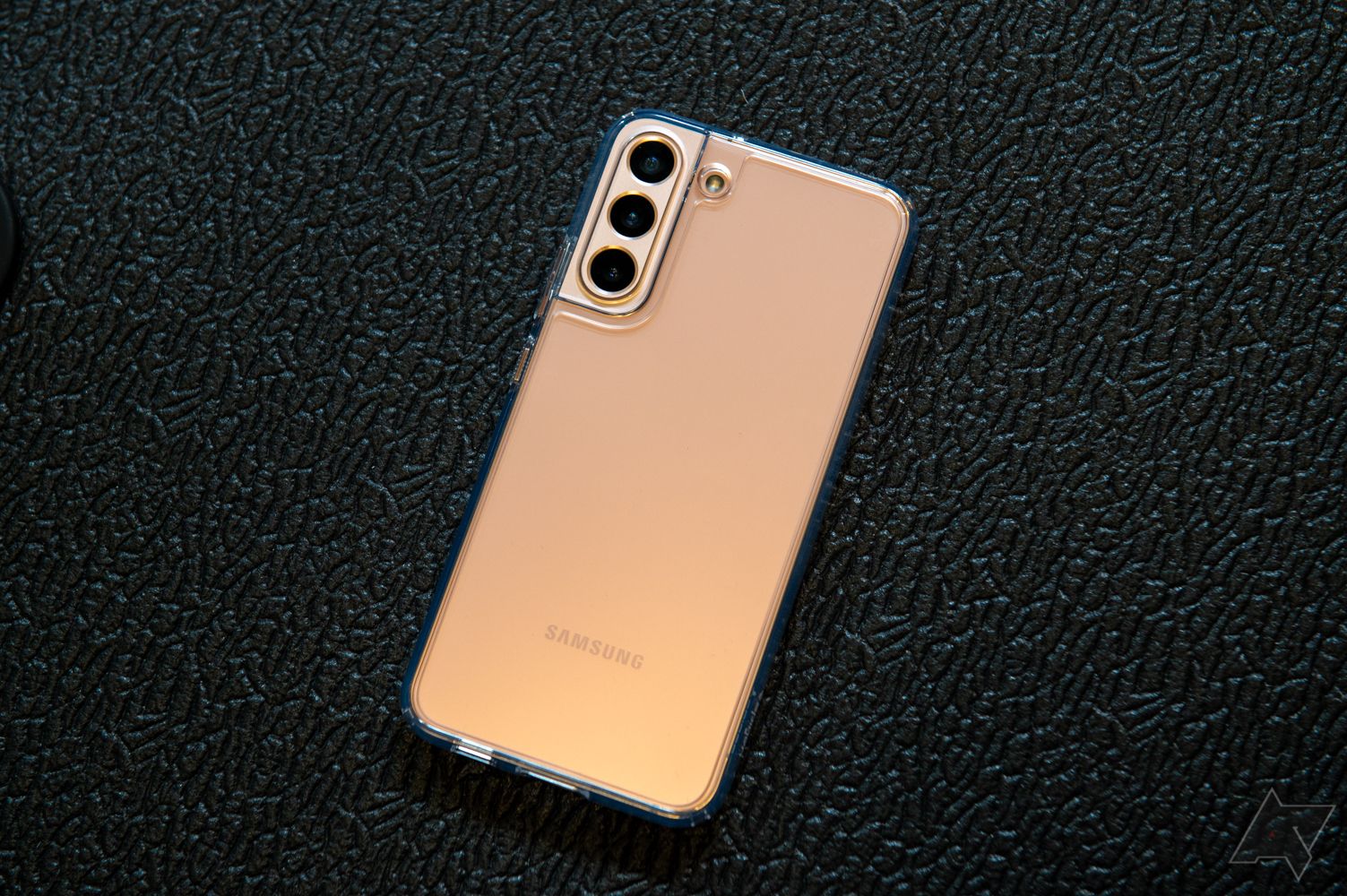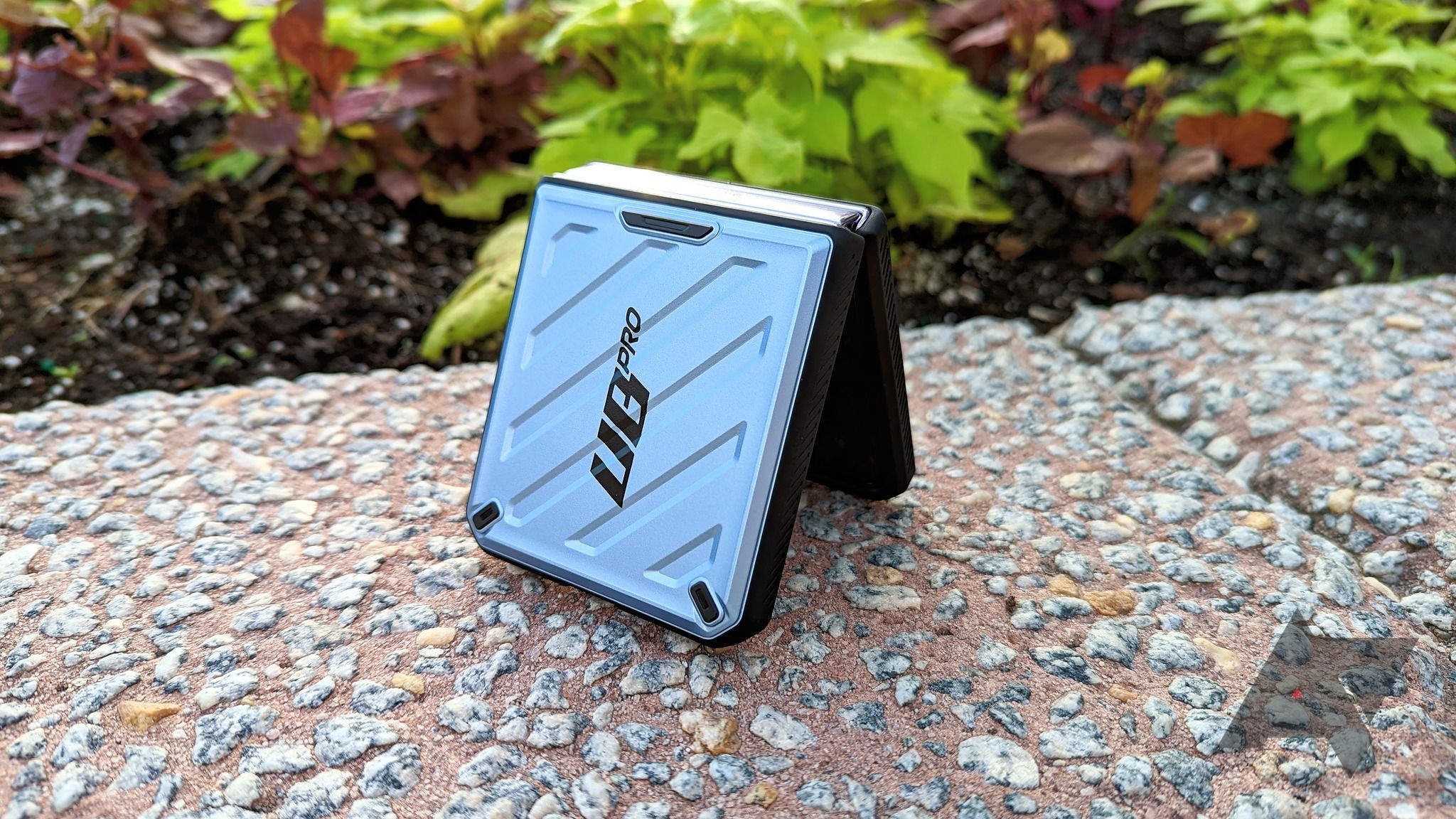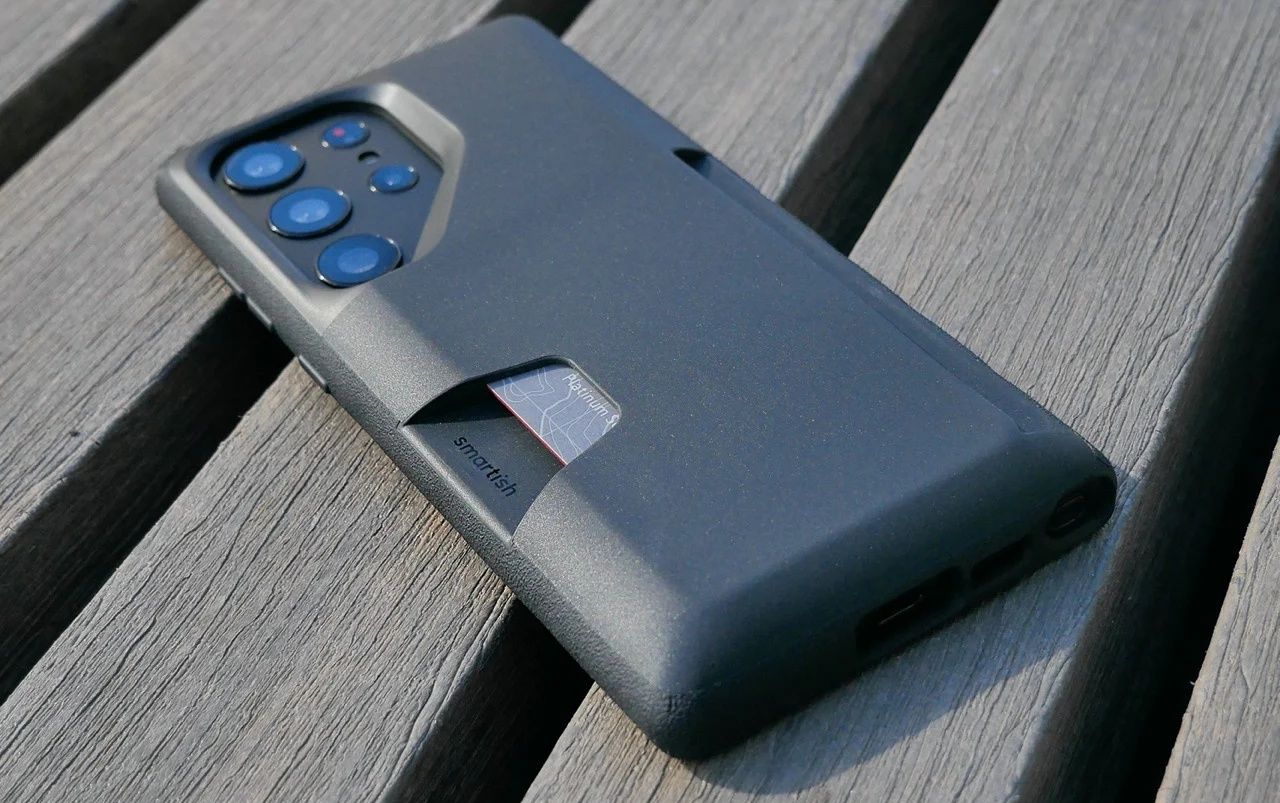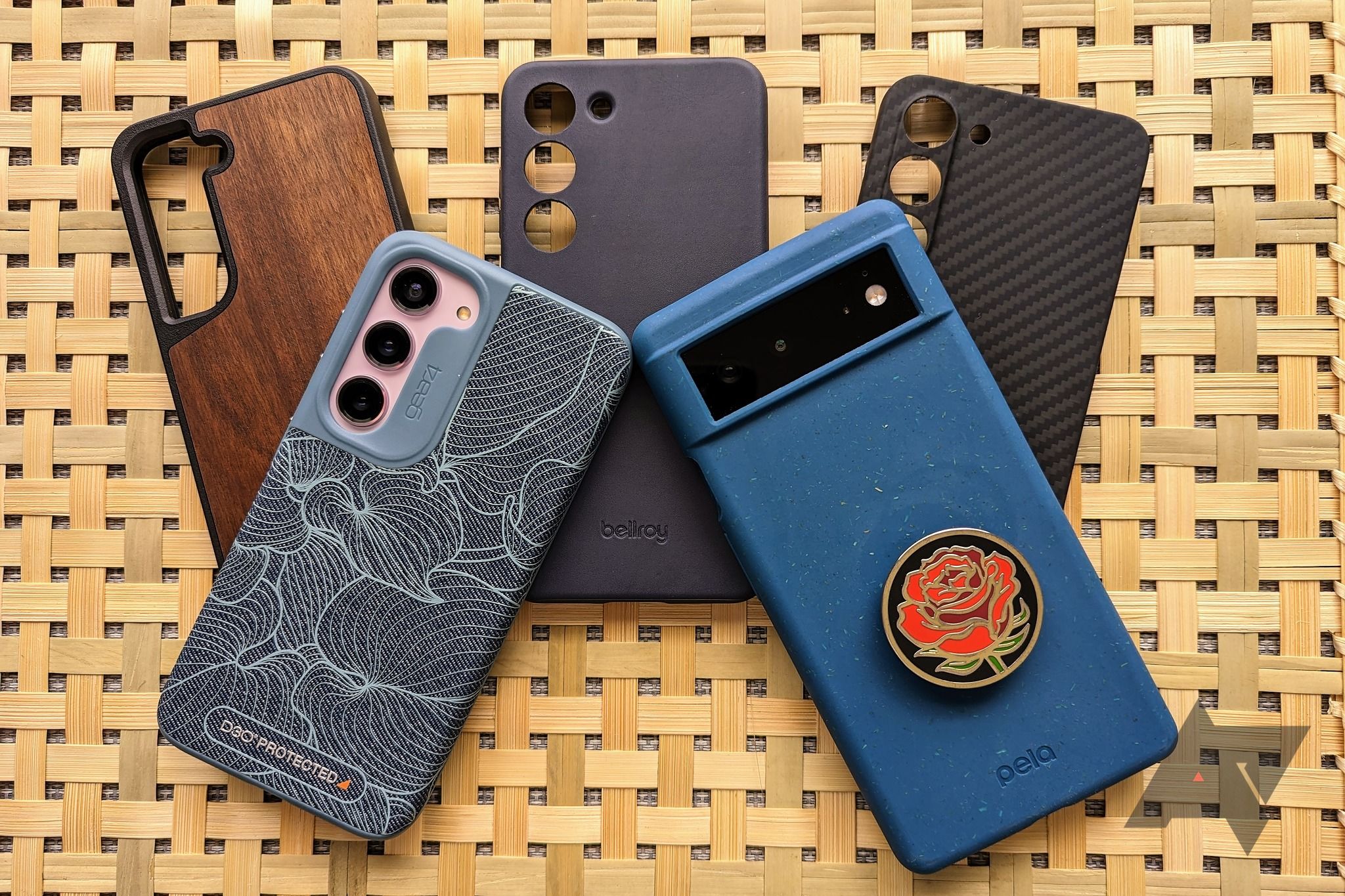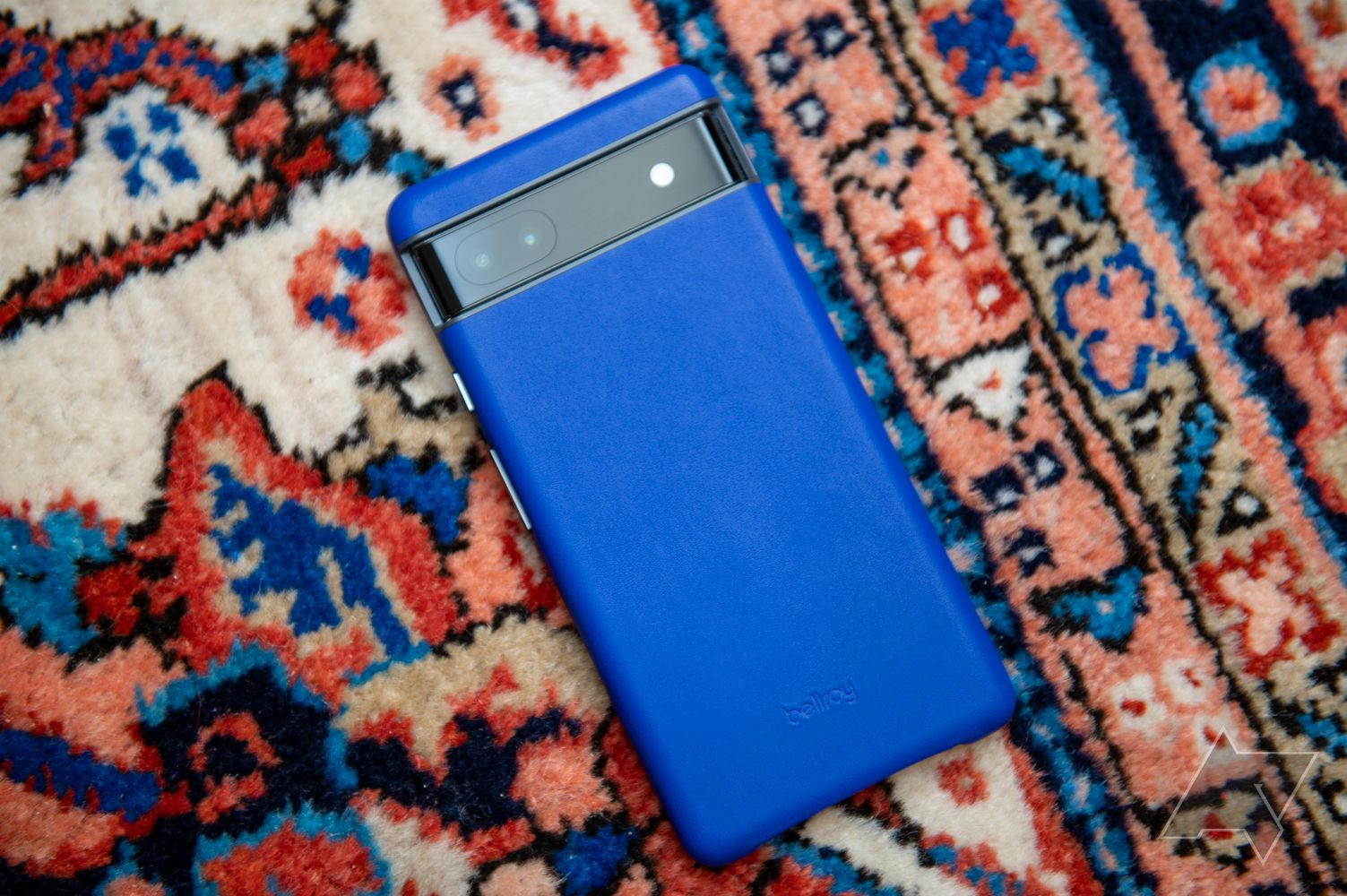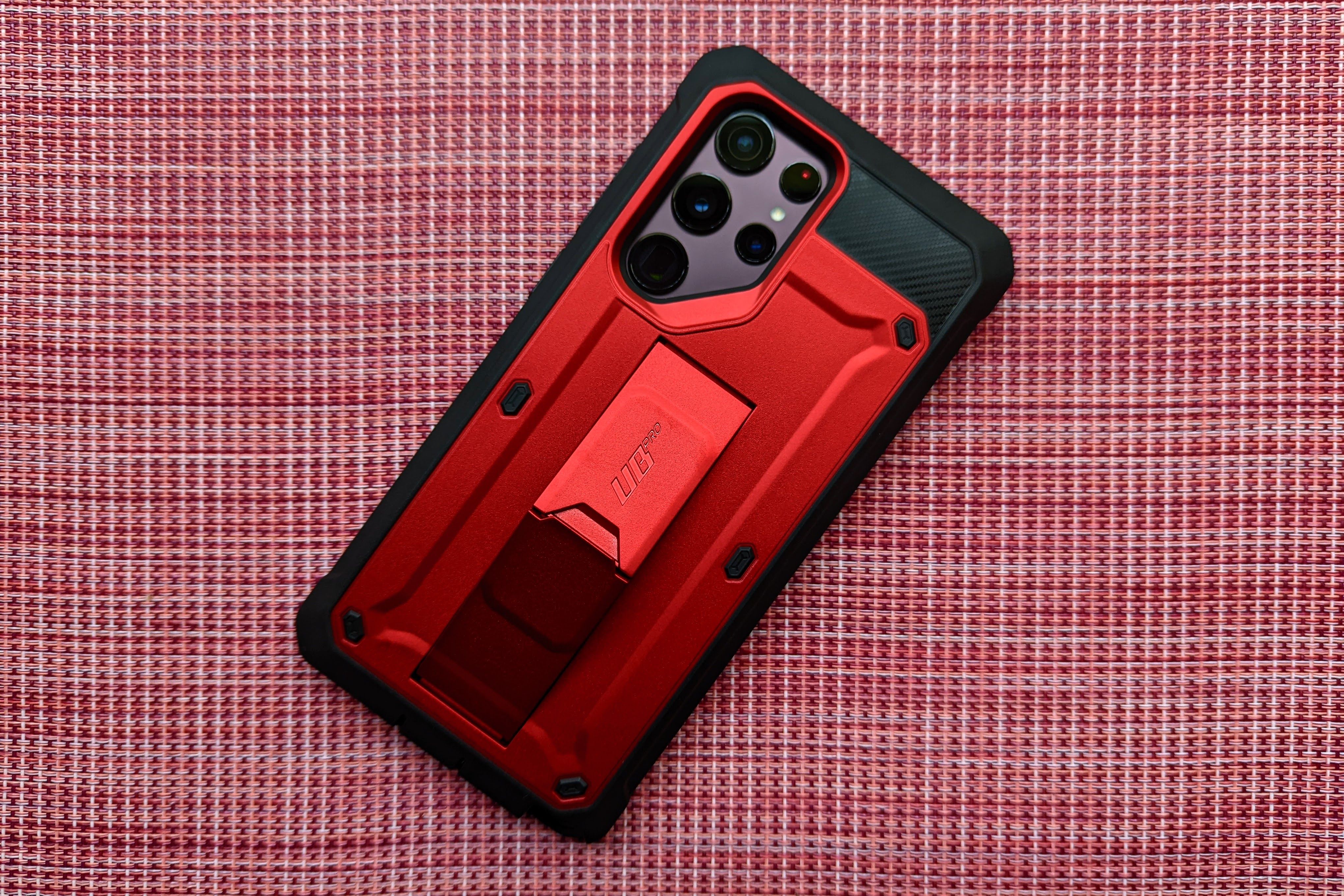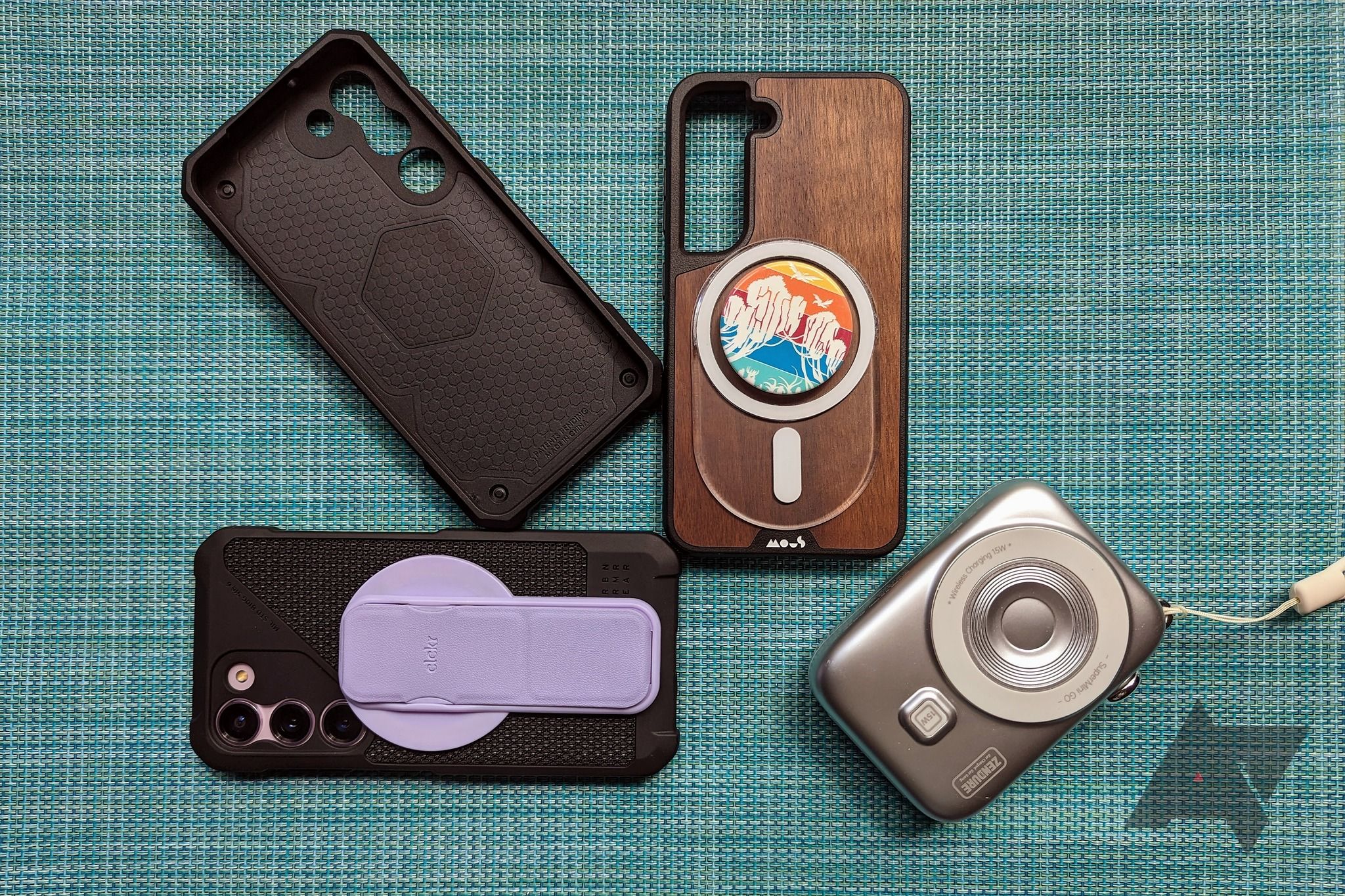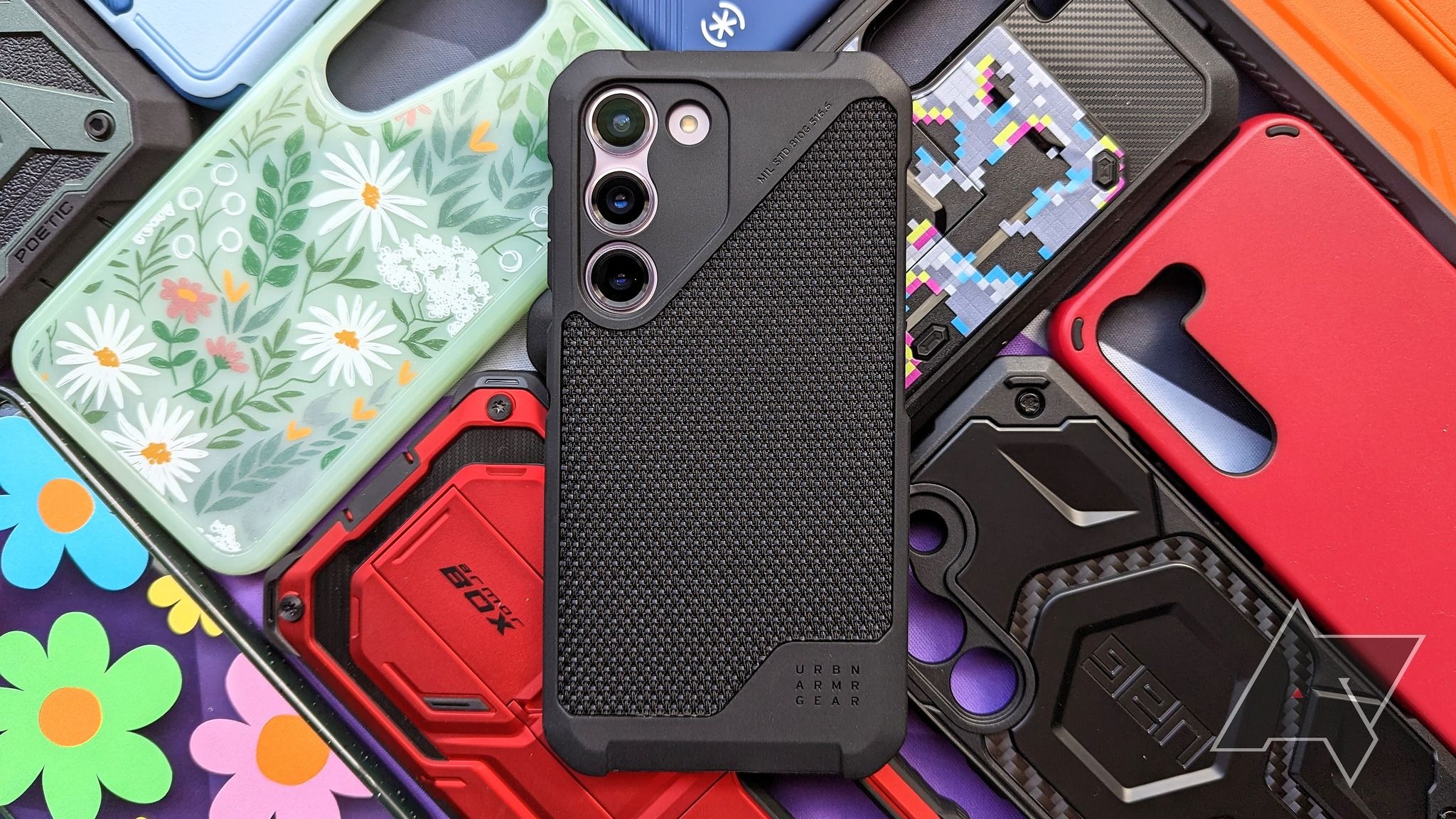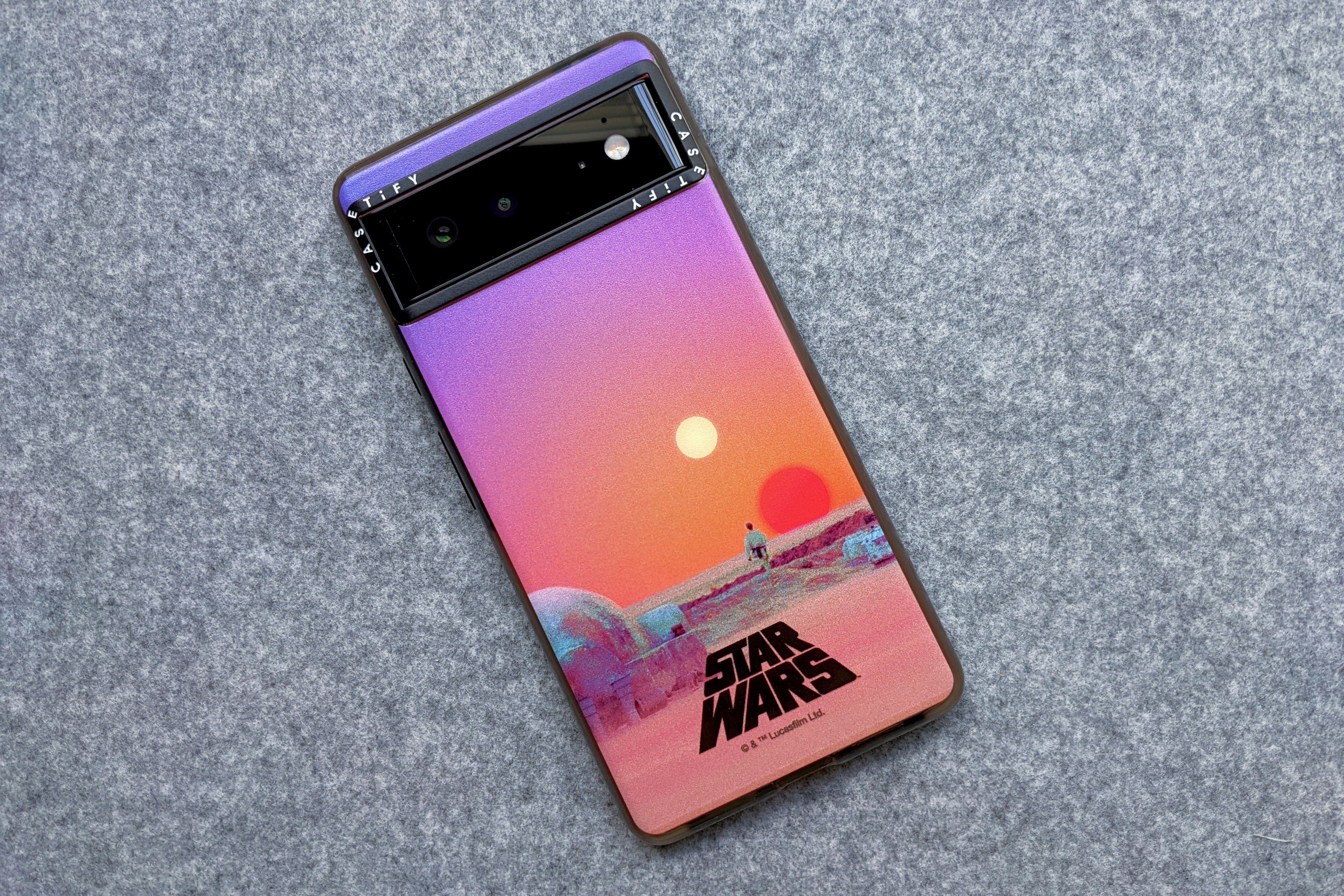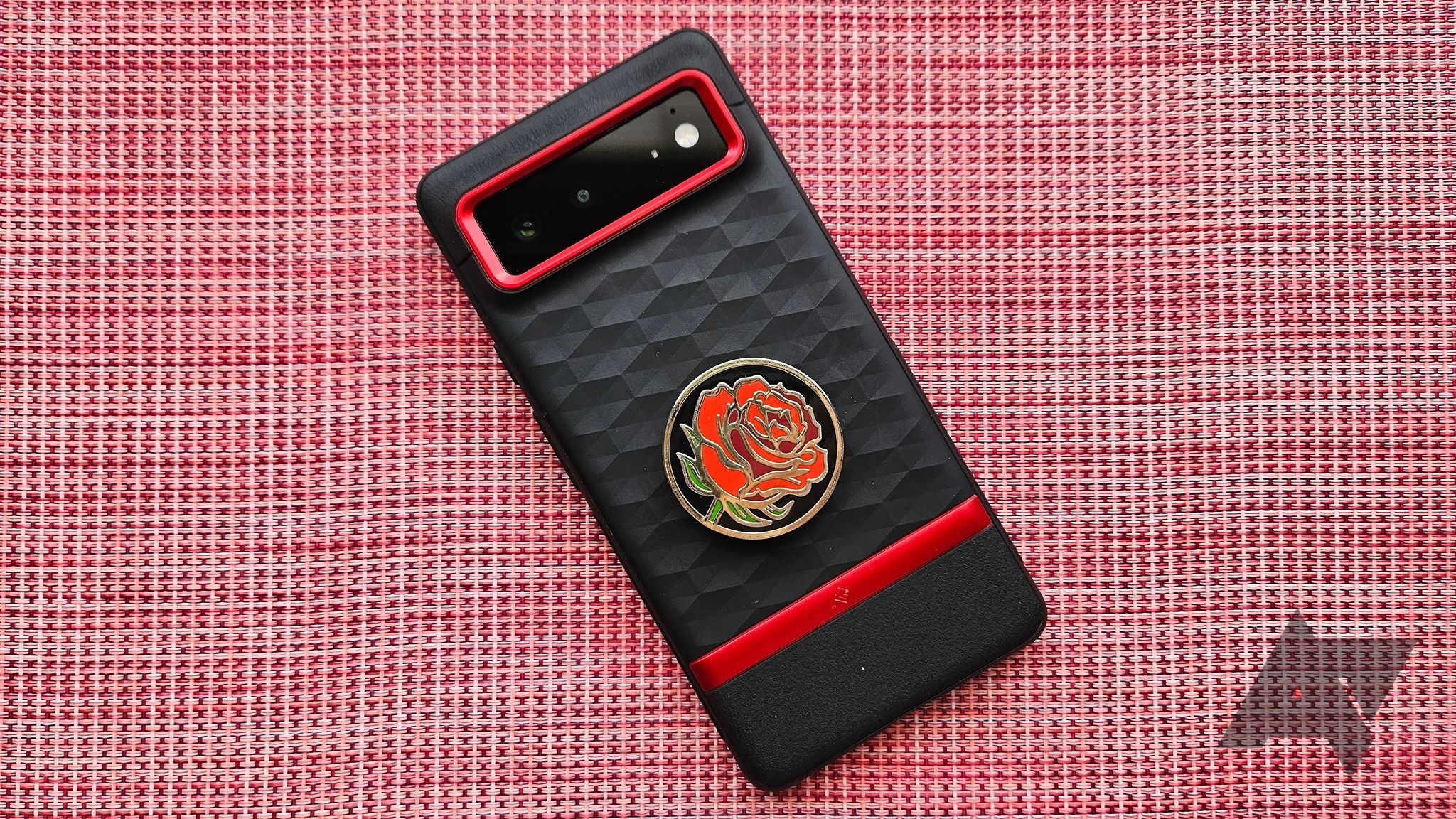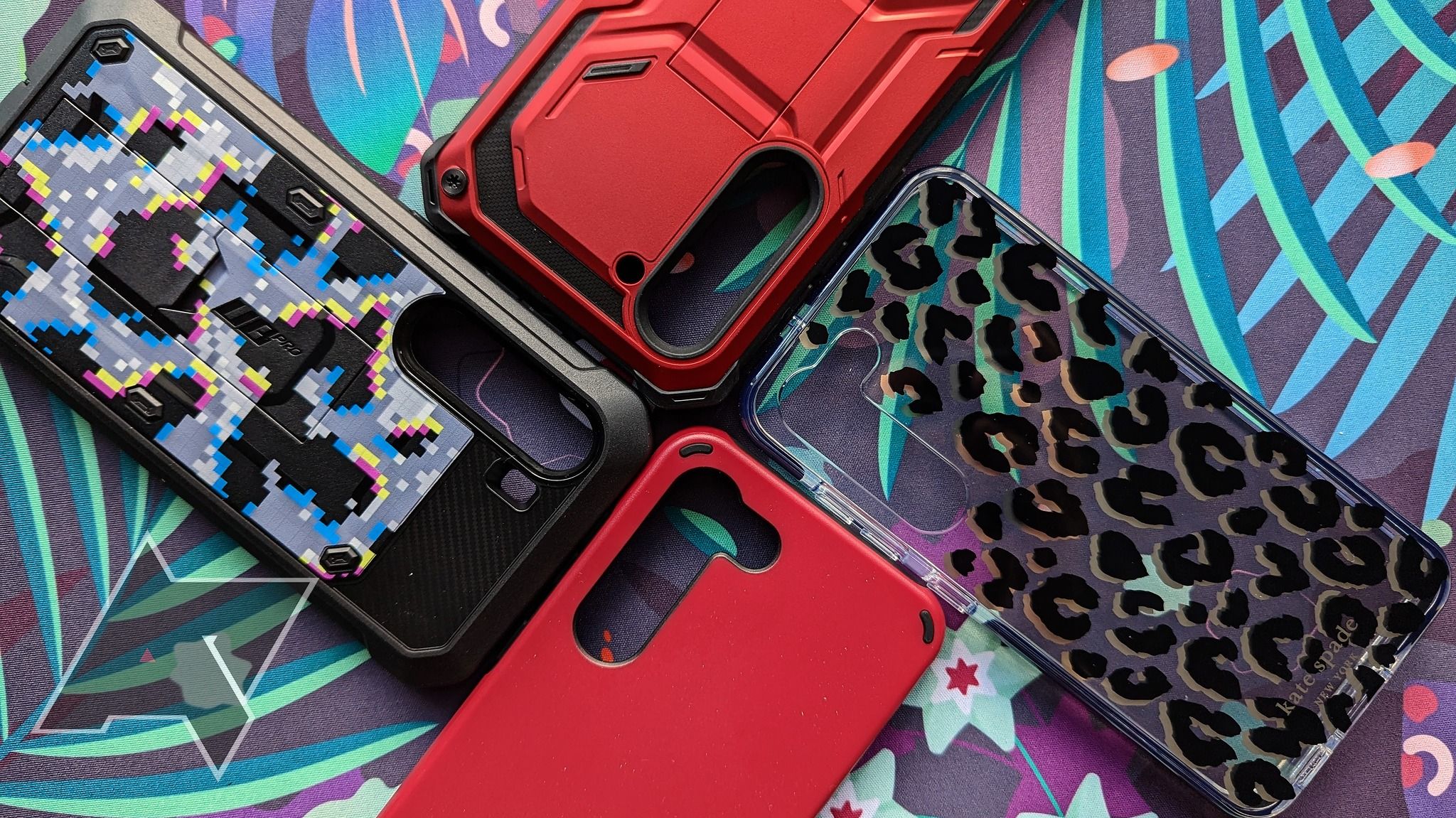Phone cases get a bad rap. They add bulk to your sleek, shiny phone. They cover up its natural beauty. They aren't a guarantee that your phone will survive whatever insanity life decides to throw at your phone. They're often ugly. I get it... but that isn't the case's fault! (Well, the ugly is.)
That's our fault for not buying the right cases for our phones.
It's easy to get overwhelmed by the sheer number of cases available, and the ridiculous disparities in features, styles, prices, and protection create too many variables to juggle on your own. Luckily, that's my job, literally. Finding the best cases for popular Android phones like the Galaxy S23 or obscure phones like the Asus ROG 6 Pro is my bread and butter, and I've spent almost a decade honing my research, experiences, and judgments into an art form.
Since I can't play personal shopper to all of you — doing it for my family and my boss is enough, thank you — I'm here to share what I look for in a phone case when I'm buying one for myself or recommending one to you in our guides. Now, grab a cold drink and settle in; there's a lot to cover.
1 Case size — and phone size
I know no one "wants" a big, heavy tank of a case unless you value durability above all else. (And that's valid if you're hard on your phone or just live in difficult environments.) That said, how big is too big isn't just a matter of case selection; it's also a matter of phone selection.
If you have the "small" Samsung Galaxy S23, then you have more "room" for a thicker, more padded case before it feels like some old clunker. If you have a Galaxy S23 Ultra, though, the phone already feels supersized and heavy, so you have less leeway and more need for that cushioning because more mass equals greater forces when it inevitably falls. This leads to a bit of a dichotomy concerning larger phones and heavy-duty cases: you want as much protection as you can have without surpassing that ephemeral boundary between "solid" and "stuffy" cases.
And, of course, it's not just about how thick a case is: thin cases can be just as tricky. The sleeker the case, the less mass to help absorb the kinetic impacts of a drop, and the less room you have for air cushions and other methods of protection. There's also a point where a thin case can become just too brittle to do anything but make your phone look cheap, and no one wants that.
This article was produced in partnership with Supcase, but its contents were not shown to the company beforehand. All content is written independently and meets Android Police's stringent editorial standards.
It's hard to gauge the thickness of a case through images alone — and you absolutely cannot trust any "this case is only 0.XX millimeters" claims. But that doesn't mean you have to just take a blind leap of faith. There are a few ways to help judge thicknesses even without the physical case in front of you. When looking at cases — especially thin cases — keep an eye on the lip around the screen and around the camera module.
The thickest point of a case will usually be around the camera, as that's the first area to come into contact with any surface you set the case down or drop it on its back. If a case has essentially no lip around the camera, it's too thin, and your cameras will get scratched up the second you set it down on a surface that's anything short of pristine.
The same is true for the lip around the screen, but it's a balancing act. it needs to keep the touchscreen up away from any particulate matter or variegated surfaces while still being slim enough to make swiping to or from the edges of the screen seamless.
2 Case types and materials
Once you know the relative thickness you want — or at least are willing to tolerate — it's time to make the biggest choice of your case-buying checklist: what type of case do you want? There are six main styles for cases, and each comes with its own quirks:
Normal/Hybrid
The most numerous segment of cases out there, I affectionately call these Goldilocks cases. They aren't too thin, aren't too thick, and try to blend protection and precision into a cover that elevates your phone rather than making it look like a 00's flashback.
The most common of these cases are hybrids: they combine two or more material types to create a case that's strong yet slim, grippy but not a lint-magnet, rigid where it needs to be but flexible enough to easily get your case in and out. The only "problem" with this type of case is that you will simply drown in a sea of generic cases if you're not careful.
Great examples of this category are cases like the Caseology Parallax, Spigen Rugged Armor, and the Incipio Duo.
Thin
Millions of smartphone users just want to add a little grip, scratch protection, and maybe some color to their phone, and thin cases are absolutely stellar at this. Well, that depends on the level of thin you're after. There are two types of thin cases: the first, ultra-thin hard plastic covers, which I call "candy shell cases" because they're usually in bright colors — and they will shatter like a smooshed M&M when you drop them. Usually, ultra-cheap in both construction and price, these cases give all cases a bad name, but some people somehow prefer them. Takes all kinds, I guess.
Then there are the thin cases that you should really aim for: semi-thin cases that are partially or entirely flexible TPU — thermoplastic polyurethane — and can offer at least some impact resistance while not adding any extra heft to your shiny new smartphone. These cases may not be millimeter-thin, but they can actually protect your phone in a semi-decent capacity. Classic examples include the Totallee Ultra Thin, X-Level Guardian Series, and reformulated Spigen Thin Fit.
Clear
Clear cases sound pretty self-explanatory: these cases are completely or at least partially transparent so that you can show off your phone's design, or show an ID tucked into the case without having to dig it out of a wallet every time. A subset of clear cases like the Casetify Impact Series and Cyrill Ultra Hybrid go a step beyond plain transparency by adding fun graphic designs that can combine with your phone's color to produce a more unique style. And, of course, there are clear glitter cases like the Spigen Liquid Crystal Glitter and Otterbox Symmetry Series.
While we tend to think of "barely there" thin clear cases when we picture clear cases, the most common clear cases these days are actually heavy-duty clear cases like the i-Blason Ares, Ghostek Covert, and UAG Pylo. Thicker clear cases will combine a clear backplate with a flashy bumper to hide the awkward angles around the edges and help complement/contrast your phone's natural color. They also conceal robust corner cushions to help it better survive falls.
Whichever style you get, you'll want to be on the lookout for two issues: yellowing and smudges. Clear cases can yellow over time because the UV rays from sunlight will start breaking down the plastic ever so slightly. Manufacturers have made advancements, but no case stays perfectly clear forever, and if the yellowing annoys you consider a translucently colored case.
Smudges and oil buildup are inevitable on clear cases, but regular wipe-downs and washing your hands more frequently can help keep things clean-ish.
Heavy-duty
Rugged cases are something of a sliding scale, from thinner dual-layer cases like the Poetic Neon to multi-stage covers like the Supcase UB Pro to "apocalypse-ready" tanks like the Otterbox Defender Series and Caseborne V. There's more to a heavy-duty case than being thick, though, and the first rule of heavy-duty cases is that "military tested/tough" literally means nothing.
Even thin cases these days can pass MIL-STD standards for surviving "over two dozen" 3-4ft drops. And to paraphrase a Pixar villain, when every case is mil-spec, none of them are. It doesn't help that the other main quantifiable metric by which we would judge durability is often straight-up inaccurate: drop test heights are not guarantees, they are essentially anecdotes. Even the drop test numbers that other tech publications like CNET put out, while useful, are not foolproof and should be taken with three big pinches of salt.
Let's also make one thing very clear to the "you said this case would protect my phone from everything" crowd in the audience today: there are angles and forces will break your phone no matter how sturdy its case. You can only fight physics so far with polyurethane, polycarbonate, and various silicones.
So how do you pick a properly protective case? Pay attention to the rest of its features and its materials.
- Cases that use a front frame in addition to the rear cover will offer greater drop protection than simple slip-in cases. Frames essentially suspend your phone inside the bumper and offer extra material to absorb impacts before the phone does.
- Waterproof, snowproof, and sandproof are not guarantees, especially if the case doesn't have a pre-installed screen protector. Unless the case is airtight, things can get in through the edges and around the ports. If you really need these things, invest in a durable phone pouch.
- If you do any yardwork, work in any kind of wood/metalworking shop or factory, or do frequent sports/activities involving the beach or the wilderness, look for cases with dust plugs over the USB-C and headphone ports to keep debris out of them. Even a tiny little splinter of wood can screw up your charging port if it stays in there unnoticed for too long.
- Specialty materials are not the end-all-be-all, but features like foam-cushioned corners and gel-lined bumpers can help improve the impact resistance without getting too bulky.
- Built-in screen protectors are a double-edged sword: they offer 360-degree protection but often have an unsightly "bubble" over the fingerprint sensor. They can also interfere with stylus input and precision tapping in games. They also don't offer the shatter protection that tempered glass screen protectors do.
Supcase, Poetic, Speck, Incipio, and Otterbox all have strong offerings in the heavy-duty space, but the latter three sometimes have exorbitant prices. You pay for name-brand prestige when getting name-brand protection, after all.
Wallet/Folio
You don't have to spend $1,800 on a Galaxy Z Fold 4 to get a foldy experience with your smartphone. Folio wallet cases offer up solid fundamentals and added functionality so long as you buy the right style and don't overstuff it. This is the top case style among women, as shut folio cases offer your screen more protection against all the keys, pens, and other sharp, scratch-inducing horrors inside that black hole we call a purse.
Folios come in varying levels, from single-layer folios that only hold 1-2 cards up to trifold billfolds — complete with zippered coin pouch — that happen to have a TPU phone case built into them. Some folios are even magnetically detachable these days, allowing you the protection of the flap when you're out and about and the slimmer comfort of a normal case at home.
There are also card slot and magnetic wallet cases these days — spurred by the simplicity of MagSafe — and I find myself inexorably drawn towards these cases for the ability to quickly swap from a wallet to a PopSocket or kickstand. Nothing will replace folios for those who need screen protection — or those stuck in the old Blackberry/PDA days — but the increasing diversity of wallet cases is exciting to see after a decade of stagnation in this space.
Leather/Specialty
Not everyone likes the feel of plastic, and some just think that no matter how protective it is, polyurethane feels cheap. For you tactile and hoity-toity phone fans, this is where specialty materials come in, the most well-known being leather.
Plush, premium leather cases are getting harder and harder to find as each year goes by, and brands like Bellroy thinning the leather and hybridizing the materials have made once-stellar cases now feel almost cheap. And while terms like full-grain and top-grain may mean something specific and consistent for other leather pieces like bags and belts, they're often used in completely inaccurate ways for keyword-chasing phone cases.
The only terms that will mean the same thing every time are "vegan"/PU leathers — which aren't leather but rather leather-like plastics — and "genuine" meaning actual "this came from an animal" leather. Unfortunately, genuine is often used interchangeably with premium, and even genuine leather can mean entirely different materials between different grains and layers of hide. You'll want to buy cases from known leather case brands like Snakehive and Torro, both of which are based in the UK.
Leather isn't the only fun material on the market, though. Carbon fiber is used in cases so often that they've become a cliche, but proper carbon fiber cases can be every bit as luxurious as leather while coming in a myriad of colors and designs. Cases like the UAG Monarch also use some metal pieces in addition to plastics, leathers, and carbon fiber.
For more earth-loving citizens, there are also compostable, biodegradable, and eco-friendly cases out there, chief of them being Pela. Pela's cases are smooth as silk (yet still grippy), come in dozens of fun designs, and use considerably less energy and water to produce than traditional plastic cases. They're expensive for sure, but god damn if they aren't worth every penny.
3 Specialty features
When looking at cases, there's more than just the case type to consider, but there are also features to ignore. As we already said, "military grade" doesn't mean much anymore — between advancements in materials and design, even thinner cases have been able to reach that standard for MIL-STD 1-meter drop — and similarly, don't assign any actual weight to the words "Full Body (any word here)," "Shockproof," or "Heavy Duty."
Now, let's talk about features you do want to see in a case. While built-in screen protectors are iffy, cases that come with a separate, tempered glass screen protector are a nice bonus.
Kickstands built into cases can be more of a mixed bag. Some offer small, horizontal kickstands near the bottom, which either only work in the landscape orientation or are horribly unstable when used vertically. If you have a vertical kickstand — as many heavy-duty cases do — they're more stable but take more space and add weight.
There are also built-in ring phone grips that double as kickstands, but I recommend staying away from those. Because rotating ring grips have two common points of failure — the ball bearings that allow it to rotate and the hinge where the ring folds in and out — this means that buying a case with one puts a shelf life on your case. However, if you like ring grips but hate the bulge of a stick-on, they do have their appeal.
In the age of MagSafe finally coming to more Android phones, earing "magnetic" in a case's features can have a couple of different meanings right now. Unless that meaning is "I work with MagSafe accessories," you can safely ignore it. Back when phones were about half an inch smaller and a dozen milligrams lighter, the magnetic plates built into some cases for magnetic car mounts were strong enough to securely hold your phone, but not so much these days.
MagSafe cases for Apple are legion, but they're still fewer and further between for Android. The Galaxy S23 series was the first to get a decent selection of MagSafe cases, but I'm anticipating them coming to many more phones as the year progresses and new models release. MagSafe built into phones might take a few years, but MagSafe cases are finally here and trustworthy enough to use.
4 Brand and case reputation
Speaking of trust, you're putting your faith in a $20 or even an $80 case to protect your $500-$1,200 phone, so confidence and dependability are a must. While many brands will charge you extra for the prestige of their name — looking at you, OtterBox, LifeProof, and UAG — there are just as many brands that you can reliably buy from without being charged an arm and a leg.
Building a brand takes time and experience testing out its products, but you don't have hundreds of cases and dozens of phones to build that track record with. Luckily, I do, and here is my case brand cheat sheet for those of you looking for quality cases every time.
- Caseology: Reliable affordable cases in some cute colors, especially the Nano Pop and Parallax
- Casetify: Expensive cases, but licensed Co-Lab series and impressive durability help earn the price tag
- Case-Mate: Personally, I think Case-Mate gets a little overinflated at times, but there's no denying the level of protection
- dbrand: Famous for its skins, dbrand also makes the Grip case, which you can get multiple skins for and will protect your phone excellently (though getting it back off can take some elbow grease)
- ESR: You may not have heard of it, but its kickstand cases are superb
- i-Blason: Known for the Cosmo Series, these cases are stylish yet strong enough to withstand most falls
- Incipio: Expensive at launch, but makes damn good cases, including Kate Spade New York and Coach, but the best is the Incipio Duo
- Gear4: ZAGG's case brand will give you sticker shock, but unique offerings like the London make it worth a look
- Ghostek: Its Covert and Exec make almost every clear case and wallet case guide we write, especially now that new Exec models are MagSafe
- Otterbox: The Kleenex of case companies is synonymous with heavy-duty cases, but its prices can be a bit steep around launch
- Poetic: Get 95% of the durability of an Otterbox case for half the price and more color options to boot
- Pela: Very expensive eco-conscious cases that feel velvety in the hand, are made with fair trade ingredients, and come in the coolest nature-focused designs
- Ringke: Best known for the Fusion and Fusion-X clear cases, Ringke also makes some sweet, slim TPU cases that go toe to toe with Spigen and Caseology
- Smartish: Their most fun cases are reserved for iPhones, but its Wallet Slayer and custom printing make these Austin-based cases addictive
- Snakehive: Suede-feeling actual-leather cases, though for Android, it's almost exclusively folio wallet cases
- Speck: Its designs can feel a bit stale (and expensive) at times, but the Presidio2 and Perfect Clear are popular for a reason
- Spigen: The Rugged Armor and Liquid Crystal are perennial favorites, and Spigen's only Achilles heel is that they've struggled to bring color back after years of only black and clear cases
- Supcase: Finally taking the ruggedly handsome crown from Otterbox, Supcase's Unicorn Beetle Pro is the quintessential heavy-duty case to buy
- Torro: Another UK-based leather wallet case maker, Torro's designs are subtle, sophisticated, and offer just the right amount of flare from its trademark red accents
- UAG: One of the older case makers around, UAG's heavy-duty cases are premium and perfect — except for the price
- VRS Design: A relative newcomer, VRS's Damda card slot cases may seem bulky to some, but they're long-lasting and tough as nails
While most case makers tend to stick to one case type or series, Spigen tends to stick out because they dabble in most case styles. We come back to the Spigen Liquid Crystal, Liquid Air, and Rugged Armor year after year because they never let us down, while studier cases like the Tough Armor and CS Slim keep the classic dual-shell case alive. That said, I prefer its sister brands Caseology and Cyrill because those brands offer more colors and pizzazz alongside the same level of quality.
5 Colors, patterns, and styles
Case colors are a luxury many cases can't afford. Each color a case comes in is another SKU and another product they have to make — and, more importantly, sell in decent numbers — so it makes sense that for over half the cases available, black is your only option. However, colored cases and graphic cases have become much more prevalent in recent years.
Brands like Casetify, Casely, and dbrand over up dozens if not hundreds of different styles for flagship phones, and even Galaxy A-series phones can get in on the fun these days. Smartish and OtterBox both allow you to custom print photos or various designs on their cases, too.
Then you have physical patterns to deal with. Caseology's Parallax is a prime example of a perfectly patterned case, and UAG, Tech21, and Gear4 all offer unique textures and patterns that feel as fun as they look. Just a reminder that if you use PopSockets, phone rings, or stick-on wallet pouches, patterned cases need to be shallow enough for the 3M or gel patches properly adhere. I don't usually have many issues with the Parallax, but some textured cases just don't play nice. And st
In short, black may go with everything, but your phone deserves more color and style than that.
6 Wait a minute, what about the price?
You may have noticed that we barely touched on case prices outside some premium brands and series, and there's a very important reason. Your phone case will be the most-touched item you own; it's the first thing we pick up in the morning, the last thing we touch at night, and it almost never leaves our side. If I am going to hold something for eight hours a day — I'm an unabashed webcomic addict — it needs to feel nice in my hand, work well, and look good doing it. And so I have no hard and fast rule about case prices other than don't cheap out.
Just as a cheap, thin pillow can ruin your sleep, a cheap case that will wear down or start peeling after a matter of weeks is a true waste of money compared to top-quality cases that are usually available for $30 or less. I'm not saying everyone needs to spend $80 on these so-cute-I-could-die Casetify Lion King cases, but the biggest mistake people often make when buying cases is buying a cheap one and then suffering for it for the next two years.
Big brands like Spigen, Poetic, Ringke, ESR, and Supcase offer up tremendous cases without breaking the bank, so do yourself a favor and focus on the case types, features, and style before you go worrying about the price. After all, if it keeps you from breaking your $1000 phone or paying $300 for a new screen, even a $70 case is a bargain.
Now go forth and buy yourself a better case! Your phone and your hands deserve it.

